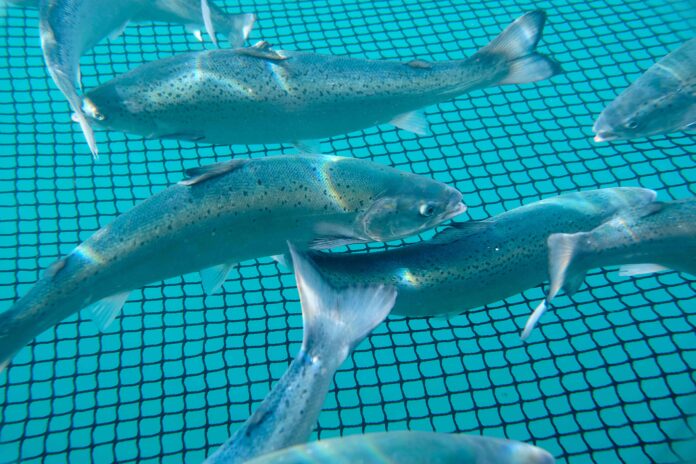For the first time in Scotland an innovative water purification system will be trialled alongside a medicine used to treat sea lice on salmon, in what could be a major boost for fish health and wellbeing.
CleanTreat, a first-of-its-kind water purification system developed by aquaculture biotechnology company Benchmark, will be tested at a Mowi fish farm in Scotland over the next month, in a trial supported by the University of Stirling’s Institute of Aquaculture and the Sustainable Aquaculture Innovation Centre (SAIC).
The consortium will test the efficacy of CleanTreat in removing Salmosan Vet in a range of conditions, aiming to determine how and in what quantities it can be filtered from treatment water. Salmosan Vet is a leading treatment for sea lice and has been approved for use in Scotland since the early 1990s.
Managing sea lice costs approximately £40 million annually in Scotland and is considered the greatest biological challenge to the aquaculture sector. Introducing CleanTreat could allow fish farmers to respond more quickly to sea lice challenges, be more precise and effective with treatment, and improve the process of treating fish for farmers.
By using the purification system, it is hoped that producers will be able to treat multiple pens within a shorter time frame and, therefore, a greater number of fish can receive the medicine, preventing the spread of infection and enhancing site-wide sea lice control. CleanTreat also has the added benefit of removing organic material from the treatment water, including sea lice and sea lice egg strings, to help prevent development of resistance against the medicine.
Traditionally, salmon have been treated with Salmosan Vet within a closed tarpaulin placed inside a net pen. It is intended that salmon will instead be guided into a bespoke vessel for treatment, with the fish returned to the net pen and the water transferred to the CleanTreat system. The medicine is then removed, along with any organic matter caught in the filtration process, and the purified water is released into the sea.
“At Benchmark, we are excited to be collaborating with SAIC, the University of Stirling and Mowi on this pilot trial. CleanTreat could enable the use of efficacious and high welfare medicines like Salmosan Vet in the most environmentally responsible manner possible, providing the best outcomes for both farmers and their fish. We are always looking for ways to support the farmers to be able to use all the tools in the toolbox as efficiently as they can and supporting the sustainable growth of the Scottish salmon industry,” Mark Todman, head of business development at Benchmark, said.
“As a salmon producer, the health and wellbeing of our fish is of paramount importance. We take a number of different approaches to supporting their welfare, including the use of medicines. However, we are always conscious of any potential environmental impact and the introduction of CleanTreat could help alleviate some of the current limitations of Salmosan Vet. This could be a significant boost to fish health and welfare across our sites,” Dougie Hunter, technical director and managing director for ocean matters at Mowi, added.
“The potential introduction of CleanTreat could be a significant improvement on how the aquaculture sector uses medicines, but it is important to note that it is an enhancement of an already closely controlled and tightly regulated process. Alongside cleaner fish and other approaches, medicines are a crucial part of the toolbox necessary for managing the perennial issue of sea lice. This project is another great example of how businesses and universities can work together to make a big difference to fish health,” Heather Jones, CEO of SAIC, stated.


